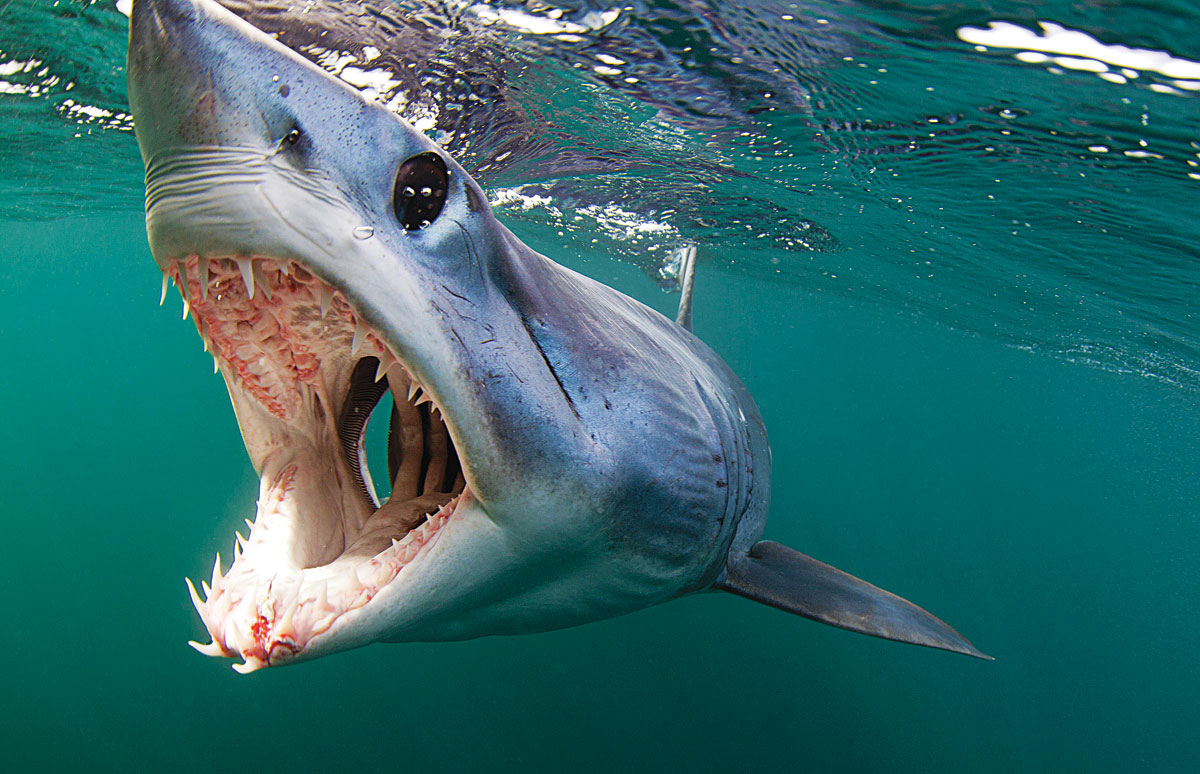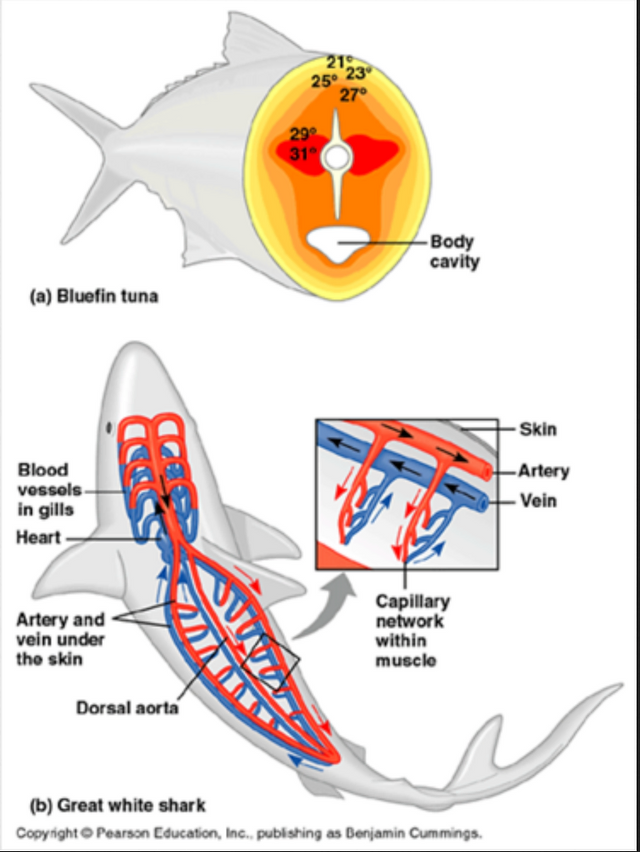
Are sharks warm-blooded?
Posted by Enrico Gennari on February 28, 2023
Explaining regional endothermy in Lamnidae sharks
Sharks are a diverse group of aquatic animals that have fascinated scientists and the public alike for centuries. The Lamnidae family of sharks, commonly known as the mackerel sharks, are particularly interesting due to their unique characteristics, including their ability to maintain parts of their body at a higher temperature than the surrounding water. This feature is known as regional endothermy, while the full capacity is typically associated with mammals and birds which can be defined as warm-blooded. In this blog, we will explore the scientific evidence behind why Lamnid sharks are warm-blooded.
Firstly, it is important to note that not all sharks are warm-bodied. Most sharks are ectothermic, meaning that their body temperature is regulated by the environment around them. However, Lamnidae, including species such as the great white shark, the shortfin mako shark, and the salmon shark, are capable of regulating their body temperature to some extent. The same is seen in many species of tunas: this is called convergent evolution!
One of the main reasons why Lamnidae sharks are thought to be partially endothermic is because of their metabolic rate. Metabolic rate refers to the amount of energy that an animal expends in order to maintain basic life functions, such as breathing, digesting food, circulating blood, and hunting. Studies have shown that Lamnidae sharks have a much higher metabolic rate than other sharks, which suggests that they are generating a significant amount of internal heat.
Another piece of evidence supporting the idea that Lamnidae sharks have evolved differently than other sharks is within their circulatory system. Lamnidae sharks have a unique system of blood vessels called the rete mirabile, which is Latin for "wonderful net". This network of tiny blood vessels allows warm blood from the muscles and other internal organs flowing back to the gills to be oxygenated, transferring heat to cooler blood flowing from the gills to the organs. This process, known as countercurrent heat exchange, helps to maintain a higher temperature in certain parts of the body than the surrounding water. The warmer areas are mainly the red muscle, the stomach, the eyes and the brain. A warmer muscle can function better in the long-run than a colder one (ask any athlete who warms up before a race), warmer eyes and brain allow to process information faster especially in very high visual predators, and a warmer stomach can digest food quicker and more easily.

In addition to these physiological characteristics, Lamnid sharks also exhibit behaviors that suggest they are warm-blooded. For example, they are often found in cooler water temperatures than other sharks, and they are able to swim at high speeds for extended periods of time. These behaviors require a lot of energy and could not be sustained if the sharks were “prisoners” of their environment.
Overall, the scientific evidence strongly supports the idea that Lamnidae sharks are warm-blooded animals. Their high metabolic rate, unique circulatory system, and behavioral characteristics all suggest that they are capable of generating and maintaining a higher body temperature than their ectothermic counterparts. While the exact mechanism behind this ability is still being studied, particularly whether and how they are able to control the body temperature, it is clear that Lamnidae, as Thunnidae are truly remarkable species , evolved separately in similar ways, with many fascinating adaptations to become incredible predators.